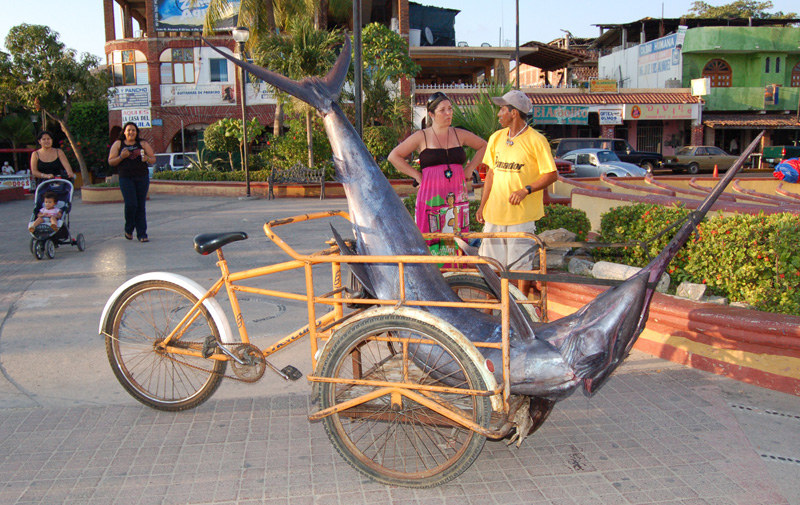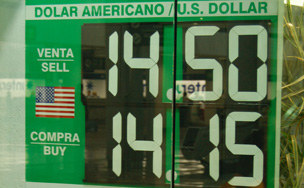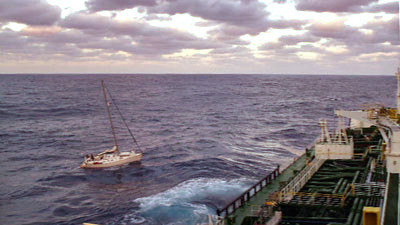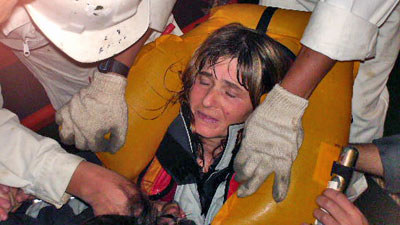
Economy’s Weak, but the Dollar’s Strong

© Latitude 38 Media, LLC
Not that anything about our current economic meltdown makes perfect sense, but it strikes us as pretty ironic that the dollar is actually stronger today than it has been in years in a bunch of places where sailors congregate.

©2009 Latitude 38 Media, LLC
The most striking example is Mexico, where the exchange rate has been around 10 pesos to the dollar for the past decade. During our recent 10-day stay in Zihua and Puerto Vallarta we saw the rate increase from the mid 13s to 14.3, and today it’s up to 14.75. Bottom line, if you’ve got any money left in the cookie jar, it’s a great time to travel south of the border.

© Latitude 38 Media, LLC
Meanwhile, 4,000 miles to the west, Bruce Balen of the Long Beach-based Cross 46 Migration reports that the strengthening greenback is now a boon to Americans cruising the South Pacific. In an email from Tahiti yesterday he wrote: "It’s so nice now with the exchange rate at 92 CPF (French Polynesian francs) to the dollar. It was 72 when we arrived in the Gambier last year. Everything is so much more reasonable. Well, most things. We still don’t eat out when we are here – as you know, the restaurants are tres cher. But we’ve been buying a kilo of fresh tuna for $10. Yum!"
Southbound Net Is Alive and Well
Mark Schneider of the Valiant 40 SolMate writes in to quash a nasty rumor:
"For years West Coast cruisers (especially along the Pacific side of Mexico) have counted on the Southbound Net for nightly weather, maritime bulletins, and contact opportunities. Today I heard a cruiser say that the Southbound Net had disappeared . . . not true!
"As the net coordinator for Southbound, I can faithfully report that we meet nightly at 0145 UTC on 4054 kHz. This is a singlesideband frequency on the upper sideband. We are a helpful, cruiser-friendly net and look forward to all dropping in. For more information (including contact coordinates) please visit www.InOneDay.ca."
NTSB Report on Cosco Busan
In a final analysis of the Cosco Busan oil spill on November 7, 2007, the National Transportation Safety Board determined this week that several factors caused the collision that spilled more than 53,000 gallons of fuel oil into San Francisco Bay and resulted in close to $75 million in damages. The NTSB passed the blame around, citing pilot John Cota’s “degraded cognitive performance due to his use of impairing prescription medication,” an “ineffective master” who was “reluctant to assert authority over the pilot,” the operating company’s failure to properly train its crew, and the Coast Guard’s “inadequate medical oversight” of the pilot’s condition as factors in the accident. “There was a lack of competence in so many areas,” said Acting Chairman Mark V. Rosenker, “that this accident seemed almost inevitable.”
Five of the board’s eight safety recommendations were directed at the Coast Guard, suggesting that they 1) address language and cultural differences; 2) require VTS to identify the vessel, not just the pilot; 3) clarify when VTS has the authority to direct or control a vessel, 4) require mariners to report changes in their health or medications between physicals; and 5) ensure pilot oversight organizations share performance and safety data. The two recommendations aimed at Fleet Management Ltd, the owners of Cosco Busan, were to ensure all new crew members are familiar with the vessel’s operations and safety procedures, and to provide safety manuals in the crew’s “working language.” The final recommendation was to the American Pilots’ Association to encourage pilots to include the master of the ship in the piloting of the vessel.
40 Days and 40 Nights

© Latitude 38 Media, LLC
A British cruising couple were rescued last week after spending more than a month aboard their disabled sailboat in the Atlantic. Stuart Armstrong, 51, and Andrea Davison, 48, had intended to make a two-week transatlantic crossing from the Cape Verde Islands to Antigua aboard their 42-ft sloop Sara. But on January 9, six days into the voyage, the rudder jammed. Reportedly, all attempts to free it were unsuccessful. So were all attempts to counteract or ‘override’ it using drogues.
“In effect, we were sailing round and round in circles,” said Stuart.
The couple had plenty of food and a watermaker. They had fuel and the engine ran, so they had electrical power. They also had a satphone that they used to alert both the British and American Coast Guards, and to let their families know the situation. But at the time, the weather was good and neither Stuart nor Andrea — who had 11 prior transatlantic crossings between them — were particularly bothered, said Stuart, adding, “In hindsight, perhaps we should have been.”
Ten days later the alternator went out. That meant no watermaker. They still had solar panels and a wind generator, which supplied enough juice to run a few lights at night, and to allow them continued use of the satellite phone, albeit sparingly.
Coast Guard stations in both Britain and the U.S. monitored their position but — according to intial reports — because of their remote location, no rescue attempt was launched. (It seems hard to imagine the Coasties would not at least divert a ship to this obviously disabled boat, especially with storms forecast to hit the area.) So Stuart and Andrea just sat tight, played a lot of cards, talked to their families once or twice a week, and hoped they’d eventually drift close enough to the Caribbean or U.S. coast that a ship might intercept them.

© Latitude 38 Media, LLC
In the weeks following, they were at the mercy of several storms, each one seemingly worse than the one previous. Finally, 40 days after they had left the Cape Verdes, they were rescued by the supertanker Indian Point, which rendezvoused with the yacht on February 18 about 320 miles southwest of Bermuda. By that time Andrea was too weak to climb a rope ladder, so she was put in a safety harness and hoisted aboard. The couple were checked by the ship’s medical staff and, save for a few cuts and bruises, given a clean bill of health. They were assigned a cabin for the remainder of the trip, and were due to have arrived in Amsterdam yesterday. The disabled yacht could not be hoisted aboard or towed, so they had to leave her.
“The boat had been our home for eight years,” said Stuart. “Although we have now lost her, at least we still have our lives.”
